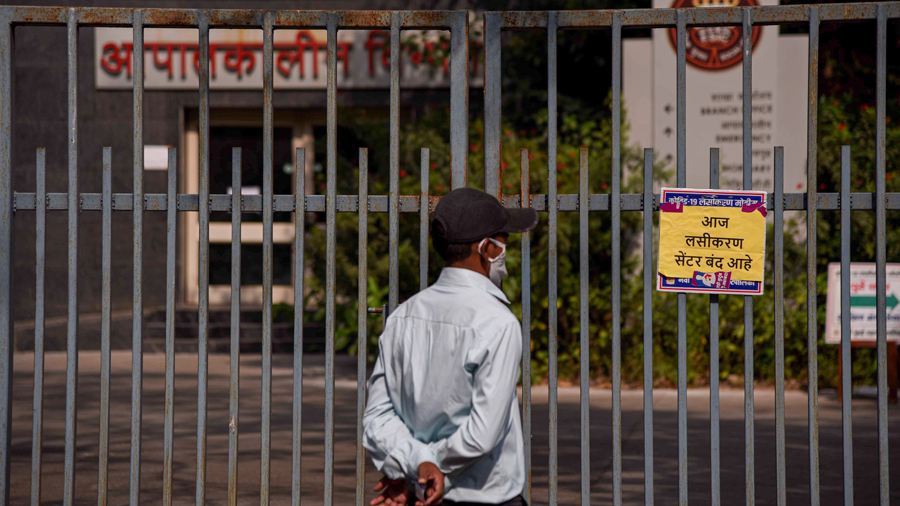Hundreds of people, young and old, queued up outside a vaccination centre in Osmanabad district in Maharashtra last week; only 350 of them got their first jabs.
The situation on all fronts in many parts of rural and small-town India is grim and agonizing. People having to line up for everything has been emblematic of the Narendra Modi government’s seven years in power. Queuing up for vaccines, which are currently in short supply, is the latest example.
While we have been humbled by the second deadly wave of Covid-19 and a botched-up vaccination drive, edible oil prices have skyrocketed to Rs 175-200/litre, crushing the poor man’s food budget. The forecast is that edible oil prices would be in that range for at least six months. Nearly 70 per cent of our domestic demand is met with imports. We did not anticipate global shortages. We do not encourage farmers to increase oilseed production by incentivizing such crops. An average family earning Rs 6,000 a month is therefore spending a whole lot more on edible oils when hardships are growing.
What’s more, petrol prices touched Rs 100 a litre in many cities last week before rebounding by a couple of rupees, and domestic gas prices are spiralling. India currently resembles a ship that is caught in a storm sans the captain. The poor man is saddled with a double whammy: the economy is in a shambles and the pandemic is flaring up.
Scientists and epidemiologists studying India say that the situation could be several times worse than the official data suggest. Gujarat, Uttar Pradesh, Bihar, Madhya Pradesh and many other states are reportedly fudging Covid-19 data. Sandesh, a Gujarati daily, has of late been carrying an average of eight pages of obituaries in its editions, an indication that the official Gujarat data on Covid-19 deaths are a sham. Divya Bhaskar reported on May 14 that Gujarat issued 1.23 lakh death certificates from March 1 to May 10 — around 65,000 more compared to the corresponding period last year.
In rural and tribal India, conditions have worsened manifold. No one is counting either the case fatalities or the people who are Covid-positive because no one is testing people or keeping a log of deaths. The second wave has penetrated the countryside and small-town India with a vengeance. People are dying of both infections and the lack of timely treatment. In cities, as in the countryside, this turmoil will remain etched in people’s memories for a very long time, certainly in the minds of those who lost their near and dear ones or those who survived the crisis exacerbated by a heartless Centre.
Many who survived the virus must now deal with exorbitant medical bills. A group of insurers had petitioned the Supreme Court saying private hospitals are inflating Covid-19 treatment expenses. As if all of this were not enough, the agrarian crisis in rain-fed areas has turned severe. While the monsoon is thankfully predicted to be normal, small farmers in many regions are staring at shortages of seed, fertilizers and labour ahead of the kharif sowings.
One can only sympathize with Prime Minister Narendra Modi, awaiting the year 2022 to enter his new villa in central Delhi, for missing out on a chance to trumpet the completion of two years in office in his second term. How do you run a publicity campaign when shrouded bodies float over the Ganges in Bihar and the alleged land of Rama’s birth, Uttar Pradesh? How long do you fudge the data when corpses are queued up outside the shamshan and the kabristan for dignified last rites? When temples and tombs have fallen silent? 2020 was a nightmare. 2021 is turning apocalyptic.
Modi’s sworn chanters are going to be of no use for the foreseeable future.










